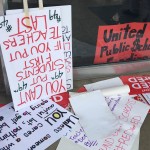I cannot believe that we are into our 2nd quarter & it is now November. It seems like yesterday I was planning professional development to welcome back staff. Now we are moving into the winter where there is cooler weather and we are fully entrenched in the teaching world. So how do we fearlessly move into the second quarter? How do we maintain our commitment to ensuring student’s rights are respected while trying to help them learn coping skills? And how do we change patterns of behavior that are no longer serving us?
Research! I have found that research is the best way to combat the patterns we need to shed. Getting together with others and learning about the world around us is the greatest way to change how we approach something. However, this also includes discussions. Discussions around difficult concepts and topics are expected and welcomed. Having respectful discourse has become the saving grace of our school. It does not matter the topic we discuss. An open-door policy is my number one rule as a principal, and this over the last few years has served me well.
According to Chapter 6 in the book, “Race, Ethnicity, and Multiculturalism Policy and Practice,” by Eugene Eubanks, Ralph Parish, and Diane Smith, there are two types of discourse. Discourse 1 is hegemonic cultural discourse. They suggest that this type of discourse maintains current social practices and systems. This type of discourse does not transform the beliefs or the systems in a school. The second type of discourse is much more critical discourse which involves a seriousness around educating everyone well.
In order for discourse II to happen, there are other changes that must occur as well and the change that is being proposed cannot be a superficial one. But how do you create a culture of respect where the discourse of this nature can even happen? How do we create this in classrooms among students so that conversations about the world around us can occur without using old perspectives? Chapter 6 suggests that in order to get out of our own way we must first identify substantive issues and those we must use for a critical theory approach. As I mentioned above, I feel that we have this at our school. We have barriers, of course, but that we always keep an open mind. We work to make sense of the systems we have in place so that they support students.
As I read more of chapter 6 I began to realize, the same belief systems keep cropping up over and over. We must do something different. I think the best example that I can think of in regards to this is the systems when students are disrespectful to staff. The teachers respond on varying levels, but the result usually ends up with a student being placed in a time-out in order to, “think about their choices.” However, this doesn’t seem to be fixing the underlining issue. This month I will challenge myself and my team to use critical theory approach in order to ask questions. Why are students being disrespectful. What was happening before? And what are the cultural belief systems we have in place where we are responding only in one way? This month, I will further challenge staff to ask the questions, why are students responding the way they do, why is staff responding the way they are, and how can we move together to change the system that is supporting this type of response from teachers. What discourse will you engage in this month with your colleagues and students?










Comments 2
Hi Austine,
Thank you for sharing this blog. I appreciate that you go back to research to help find a solution to trends at your school. Love that you will use use critical theory approach when asking questions.
Why are students being disrespectful?
What was happening before?
And what are the cultural belief systems we have in place where we are responding only in one way?
I can’t wait to hear how your challenge goes.
Thank you for sharing this article. I appreciate reading this from a principal’s perspective. I am sure that your willingness to allow and encourage this level of communication in your community has created a special environment where EVERYONE learns (this includes the adults. I look forward to reading more from you.